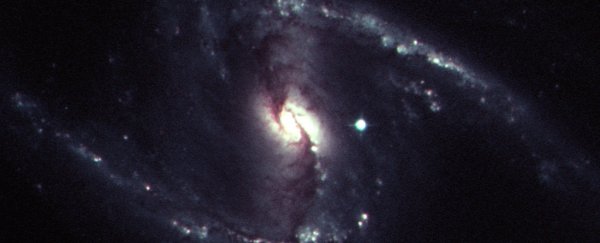Calling all citizen scientists! A project looking for those dying, exploding stars called supernovae out in deep space is also searching for volunteers to help in the work, and you can get real science credit for it along the way – even if you've never done a second of star-gazing before.
Astronomers from the Australian National University (ANU) want eager participants to hunt through pictures captured by the SkyMapper telescope, and flag up potential areas of interest where new imagery differs from historical records.
Those differences could point to the presence of a star undergoing a bright, violent death, and the first three volunteers to help pinpoint such an object will get credited in the final report, which will be presented to the International Astronomical Union.
With an area of sky around a thousand times larger than the full Moon to get through each night, ANU researchers say they need all the help they can get.
"Supernovae are explosions as bright as 100 million billion billion billion lightning bolts, and so we can use them as markers to measure how the Universe is growing and what's causing its expansion to accelerate," says one of the team, Brad Tucker from the ANU Research School of Astronomy and Astrophysics.
"People can help us find exploding stars by scanning the SkyMapper images online to look for differences and marking up those differences for the researchers to follow up."
In other words you don't need a telescope to get involved, because the 1.3-metre (4-foot 3-inch) SkyMapper is going to be doing all the heavy lifting. All you need to do is log into the Supernova Sighting web portal at Zooniverse and keep your eyes open – you'll get full instructions for what to do and what to look out for.
For each sample, you get a recent image and an image from several weeks back showing the same patch of sky, together with a subtracted image – the older image subtracted from the new one, so only the differences are left.
 We're looking for bright spots in the subtracted image. (ANU)
We're looking for bright spots in the subtracted image. (ANU)
If a large bright spot is shown in the subtracted image, that might be a supernova (or an asteroid, or a variable star). If you're not sure, you can discuss your find with other volunteers and get some advice.
At the same time, the researchers want to break the world record for the most people stargazing in multiple venues – a record the ANU itself set back in 2015.
Finding supernovae is important for all kinds of reasons – they can help us measure distances across the Universe and rates of the Universe's expansion, through a careful analysis of the dying star's brightness.
You can almost think of a supernova like a candle illuminating another pocket of space, and the more of these candles we find, the more we know.
They also come in different types, with some forming as massive stars run out of fuel, and others being created from white dwarfs and other stars colliding. That's all useful for understanding more about how galaxies and planets come into being (most of the elements heavier than iron come from these exploding stars).
Further down the line, the data we get from supernovae could help in the hunt for dark energy, that mysterious force that scientists think is propelling the expansion of the Universe over time. Not a bad cause to contribute to with just a few clicks of your mouse.
"By helping to classify images on Supernova Sighting you will be contributing to ongoing scientific research to help understand the Universe in which we live," write the researchers.
So what are you waiting for? You can start your supernova hunt here.
